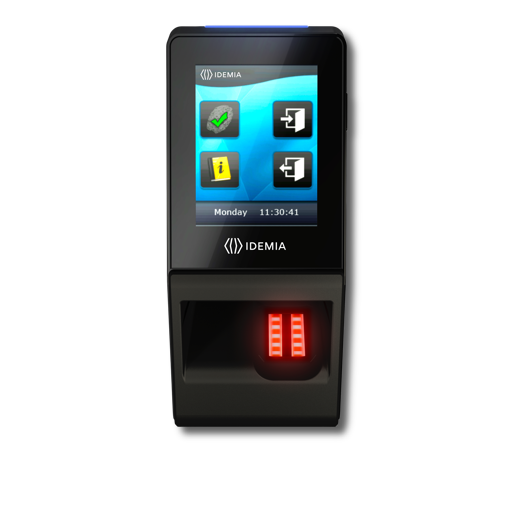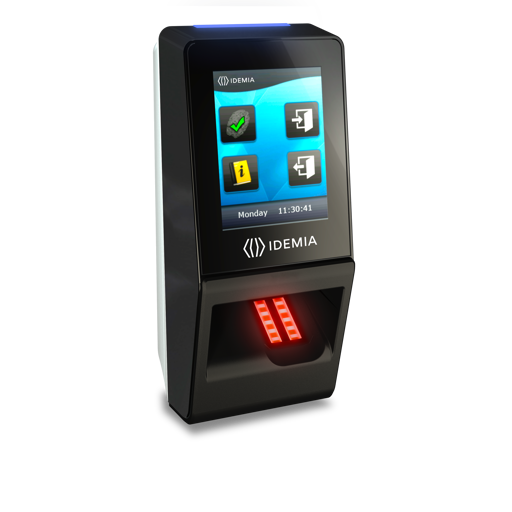SIGMA Lite+ (with touchscreen)
Product Code: SIGMA Lite+
Key Features
- 1:10,000 user identification in 1 second
- High capacity: 30,000 templates, 250,000 IDs in authorized user list
- 1 Million logs
- Anti-fraud features: fake finger detection, duress finger, timed anti-pass back
- Flexibility: Prox®, iClass® or MIFARE®/DESFire®/NFC contactless card reader as an option
- Embedded web server
- 2.8″ Touchscreen display
- Tough design: IP65 rated and vandal resistant (IK08)
About the product
A slim and powerful touch fingerprint device to equip door frames and mullions, server rack door or turnstiles. It simply guides users with a LED indicator.
Engineered with the same attention to detail and performance as their predecessor, the MorphoAccess® SIGMA Lite+ terminals are specifically designed to equip narrow mounting surfaces, such as glass/aluminum door mullions, turnstiles, or server rack doors.
Designed with the same form factor as SIGMA Lite, the SIGMA Lite+ includes an additional 2.8” touchscreen for extended features such as recording time & attendance, In & Out function keys, PIN code, intuitive icons and live messages.
Installation
The Sigma Lite+ Fingerprint reader can be seamlessly connected to our range of top-of-the-line controllers, including the SDC-650 Multiple Door Controller (via OSDP), the SDC-620 Wiegand Door Controller (via Wiegand/OSDP), and the SDC-320 Wiegand Two Door Controller (Wiegand). In addition, it can be connected to the SEB-722 remote IO expansion board (via Wiegand).
Each reader must be connected to the network (Ethernet) to allow for template management (fingerprint enrolment, editing and removal) using our native SACS interface.
Operation
When a user presents finger at the reader, the reader transmits the corresponding user identifier number to the door controller for analysis, based on predetermined access rules. The controller then determines the access permission, which is subsequently conveyed to the reader. The reader, in turn, provides the appropriate feedback to the user through the use of its touchscreen display and buzzer signals, reflecting the determined access permission status.


